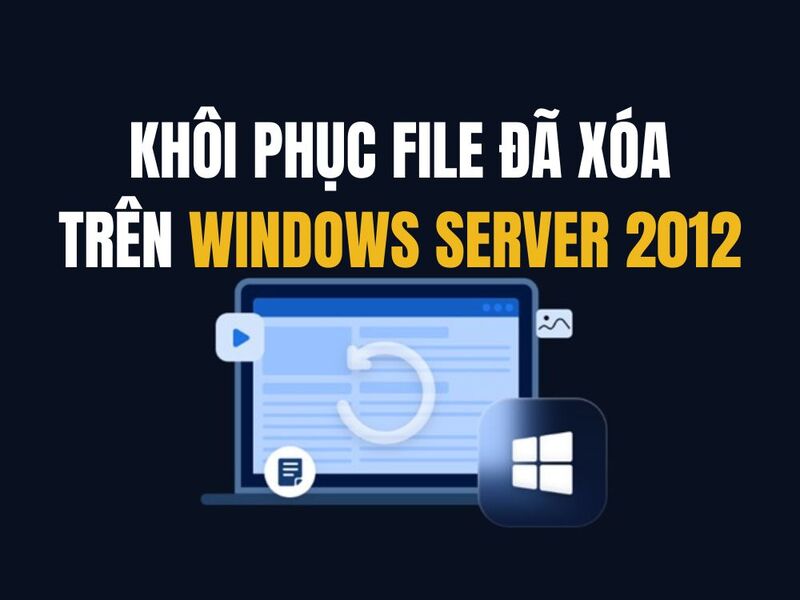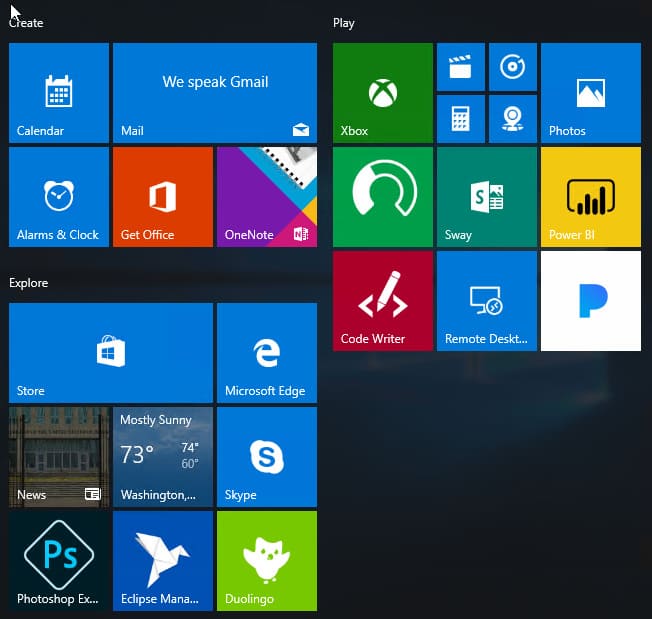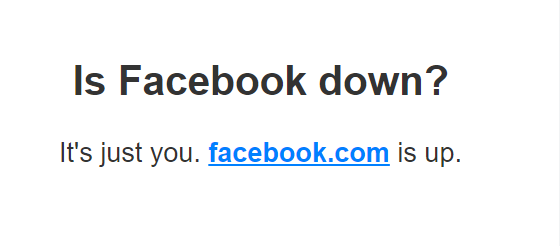Are you using Windows 11 but need to access files on your Linux partition? Don't worry, there are ways for you to do this without reinstalling the operating system. This article will guide you through 4 effective methods Access Linux files from Windows 11.
| Join the channel Telegram belong to AnonyViet 👉 Link 👈 |
4 ways to access Linux files from Windows 11
Method 1: Use Linux Reader
Linux Reader is an application that allows you to securely access Linux files from Windows 11.
Advantage:
- User-friendly, simple and intuitive interface design.
- You can use all basic features without paying.
Instruct:
Step 1: Access Linux Reader official website and download the free or paid version depending on your needs. After downloading, install the application on the computer.
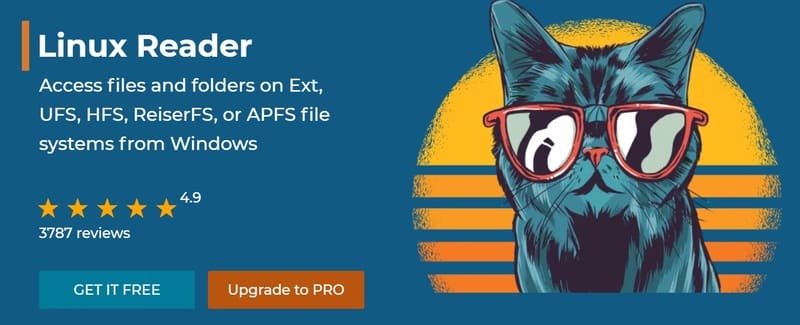
Step 2: When you open Linux Reader for the first time, it scans all the drives on your computer for Linux partitions.
Step 3: Double-click the Linux drive to open it and access the files.

Step 4: To save a file from Linux to Windows, right click on the file and select 'Save'.
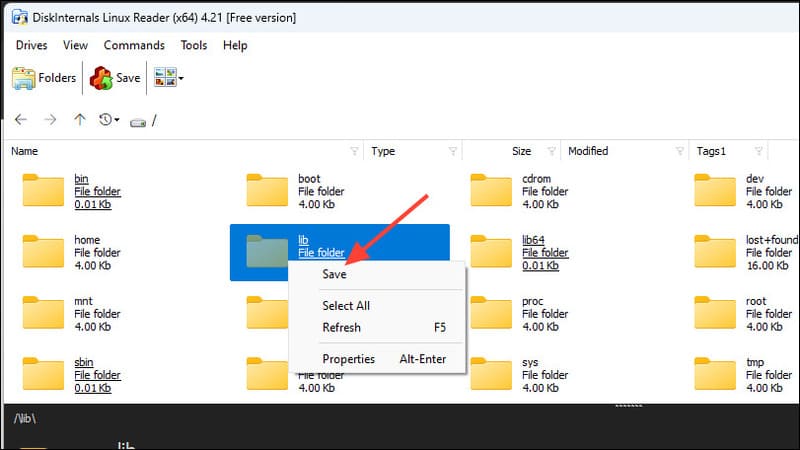
Step 5: Select 'Save Files' > Click the 'Next' button to continue.

Step 6: On the next screen, use the 'Browse' button to select the location where you want to save the file. You can also choose what action to take if the file already exists.

See more: 6 super characters that I like using Terminal Linux
Method 2: Use Ext2read
Ext2read is another free tool that supports accessing Linux files from Windows 11, entering Ext partitions (Linux's default partition) and displaying files stored in them.
Advantage:
- Completely free.
- Supports many Linux versions.
Instruct:
Step 1: Download Ext2read from the official website HERE and extract the zip file.
Step 2: Right click on the file and select 'Run as administrator'.
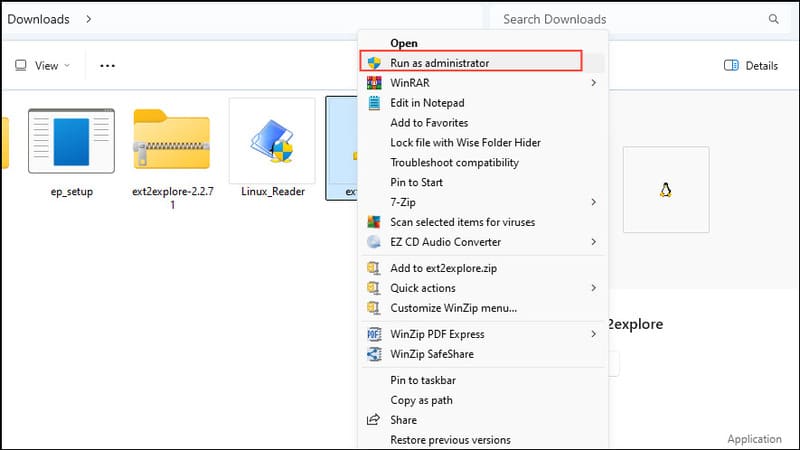
Ext2read will scan the system and display Linux files. You can save files similarly to Linux Reader.
Note: Ext2read does not support all Linux distributions, for example Fedora.
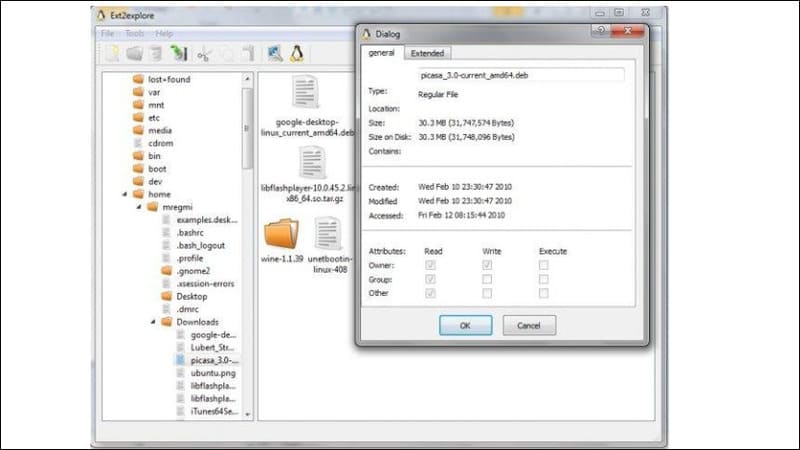
Method 3: Use Ext2Fsd
Ext2Fsd allows you to access Linux files from Windows 11 directly to Linux Ext2/3 and 4 partitions from Windows.
Advantage:
- Integrates directly into Windows Explorer.
- Supports many Linux versions.
Instruct:
Step 1: Visit the official website of Ext2Fsd HERE and download the installation file
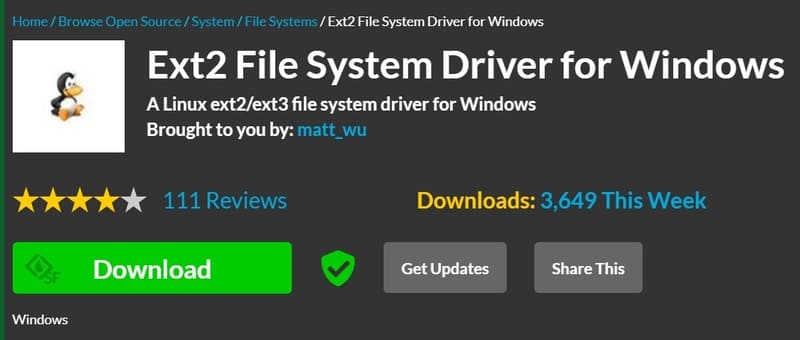
Step 2: After installation, restart your computer for Ext2Fsd to work properly.
Step 3: When Ext2Fsd is launched, it displays all drives and partitions on the computer. Right-click on the drive containing the Linux partition and select 'Assign Drive Letter'.
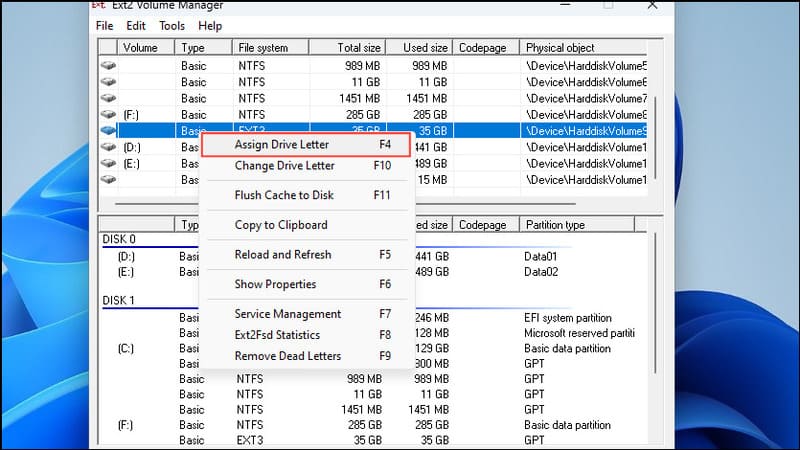
Step 4: After assigning a drive letter, that Linux partition will appear in Windows Explorer, allowing you to access all files easily.
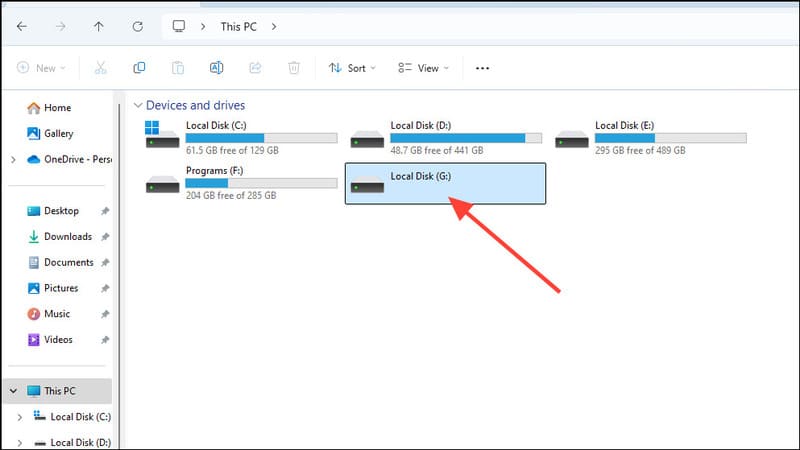
Method 4: Use Windows Subsystem for Linux (WSL)
If you have installed Linux on a drive other than Windows, you can access Linux files from Windows 11 using Windows Subsystem for Linux (WSL).
Advantage:
- Deep integration into Windows operating system.
- Allows running Linux commands directly from Windows.
Instruct:
Step 1: Open the Start menu, search for 'Windows features' and click 'Turn Windows features on or off'.

Step 2: Check the box next to 'Enable Windows Subsystem for Linux' and restart the computer.
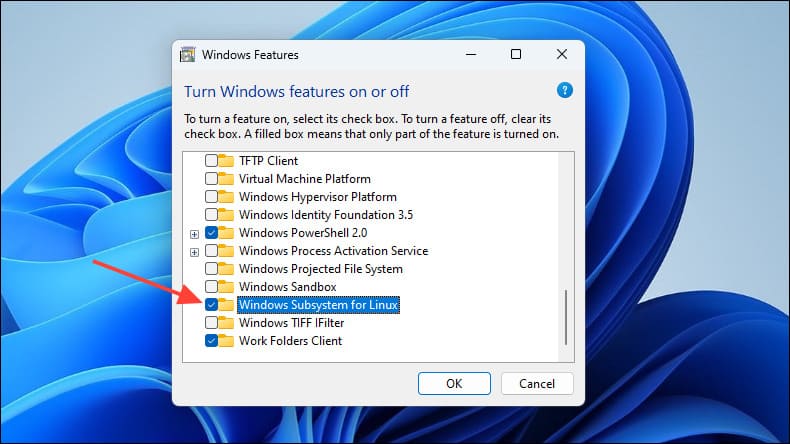
Step 3: Open Microsoft Store and search for 'Debian' or 'Ubuntu'. Install the Linux distribution you want to use.
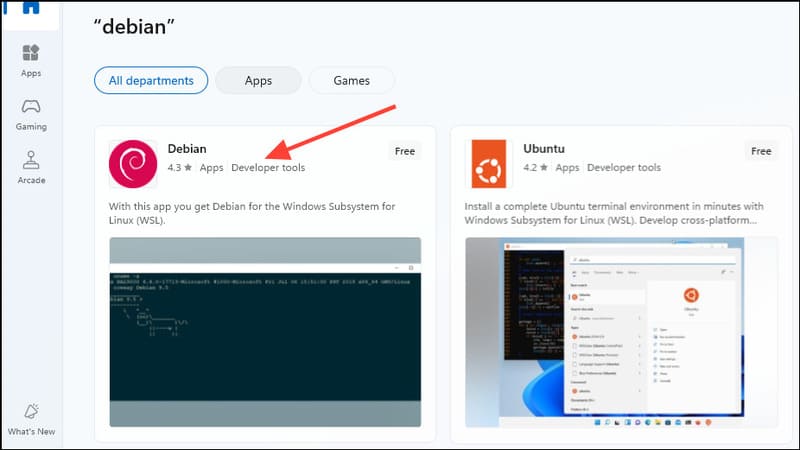
Step 4: Open Command Prompt and type wsl then press Enter

Step 5: Create a username and password for WSL.

Step 6: Open a new Command Prompt window and type the following command and then Enter:
GET-CimInstance -query 'SELECT * from Win32_DiskDrive'

Step 7: Locate where Linux is installed and use the following command to mount it:
wsl --mount \\.\PHYSICALDRIVE2 --partition 2
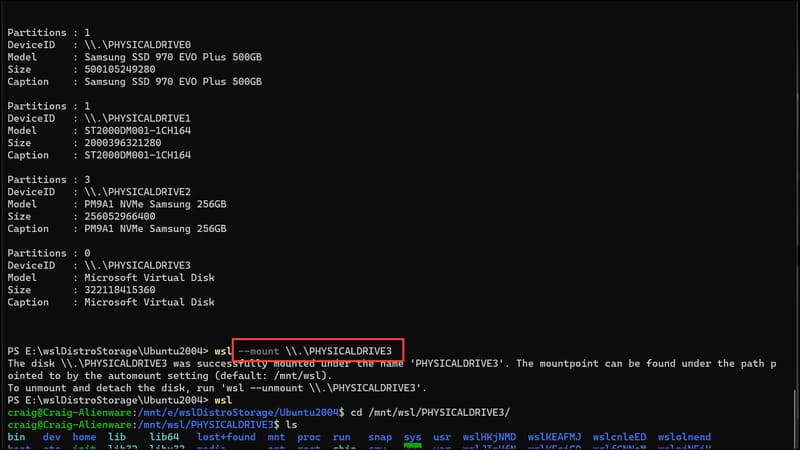
Here, '2' refers to the location of the /home and /root partitions of the Linux installation. If you have an EFI (/boot) partition in Linux, you will need to use the command wsl --mount \.\PHYSICALDRIVE2 --partition 2.
Step 8: You can now access your Linux files from Debian or Ubuntu running in Windows. You can install a graphical user interface-based file application like Nautilus if you don't want to use the terminal, with the command:
sudo apt install nautilus

Step 9: After installing Nautilus, open it and navigate to Computer, click 'Mnt', then 'WSL' and finally 'PhysicalDrive2' to access your Linux files.
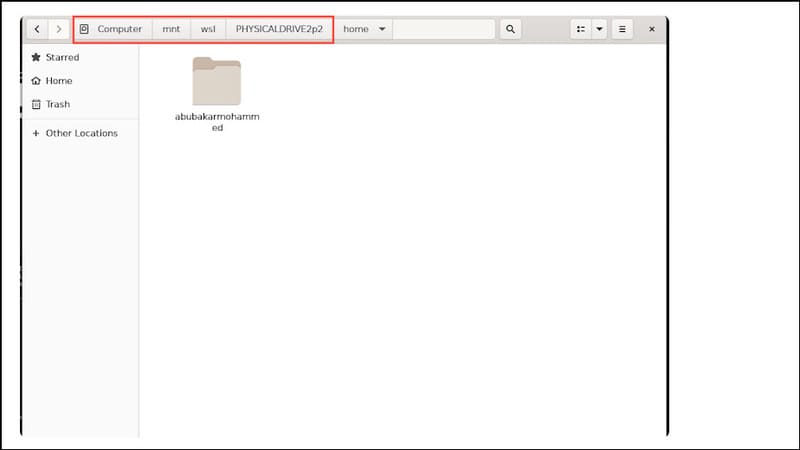
Some notes:
- This method only works with Linux distributions downloaded from the Microsoft Store.
- Avoid changing the Linux partition from Windows as this can cause errors and prevent you from booting into the Linux installation.
Things to know when accessing Linux files from Windows
- You can edit some Linux files from Windows using tools like Notepad, which supports Unix line endings.
- You can create and delete files in your Linux folders.
- However, not all Linux files can be edited from Windows because Windows does not support all Linux file formats.
- Many third-party tools let you access and save Linux files but do not let you edit them directly.
- It is recommended to create a backup of your Linux partition before accessing it from Windows.
See more: How Install Wine on Linux
Conclusion
Hope this article gives you useful information on how Access Linux files from Windows 11. Please choose the method that best suits your needs. Wish you success!



![How to restore deleted files on USB flash drive [2025] How to restore deleted files on USB flash drive [2025]](https://anonyviet.com/wp-content/uploads/2025/02/word-image-81877-1.jpeg)


